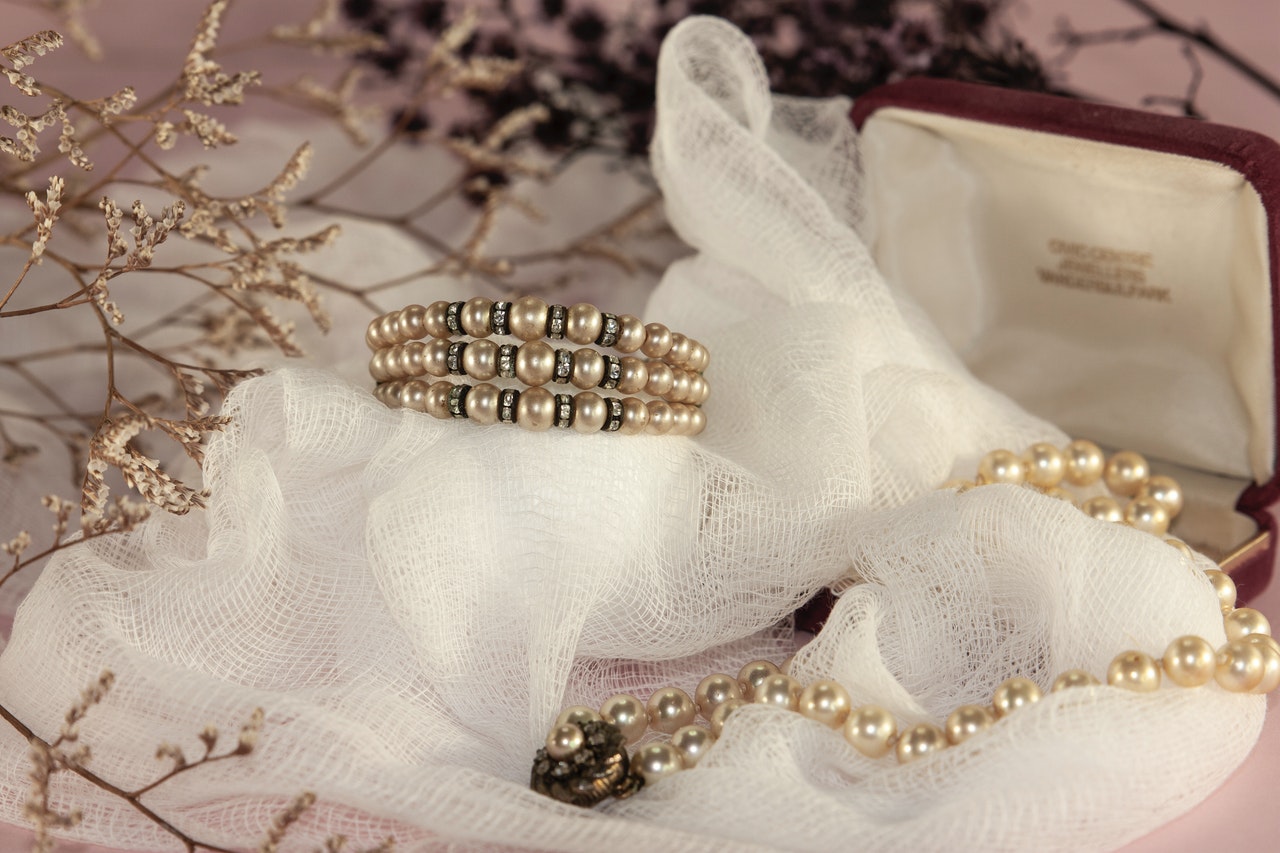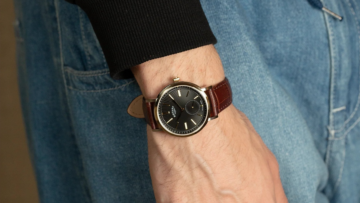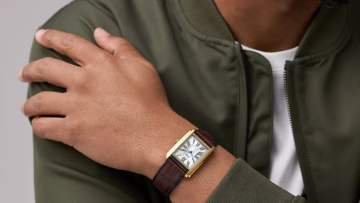Pearls are some of the oldest gemstones used by humans. Their beauty and rarity have captured the attention of people for generations. Though pearls aren’t gemstones in the traditional sense of the word, they are highly sought after for use in jewellery and decorations. Natural pearls of high quality are extremely rare. To meet the demand, people have started farming pearls or creating imitation pearls. Due to the extraordinary nature of this gemstone and its recent rise in popularity we have taken a deep dive into the world of pearls. Continue reading this article to learn more about where pearls come from, how to assess their quality and value and to see some of our pearl jewellery recommendations.
What are Pearls and How are They Formed?
Pearls are exquisite and delicate. Their lustre makes them unique and incredibly desired. Experts generally agree that pearls are gemstones. It is difficult to establish exactly what a pearl is as unlike many other minerals its origins are organic. Interestingly, the word ‘pearl‘ gives us a hint at the origin of the gem. The word originates from the Latin word ‘perna‘ meaning leg, which refers to a mutton leg-shaped mussels genus.
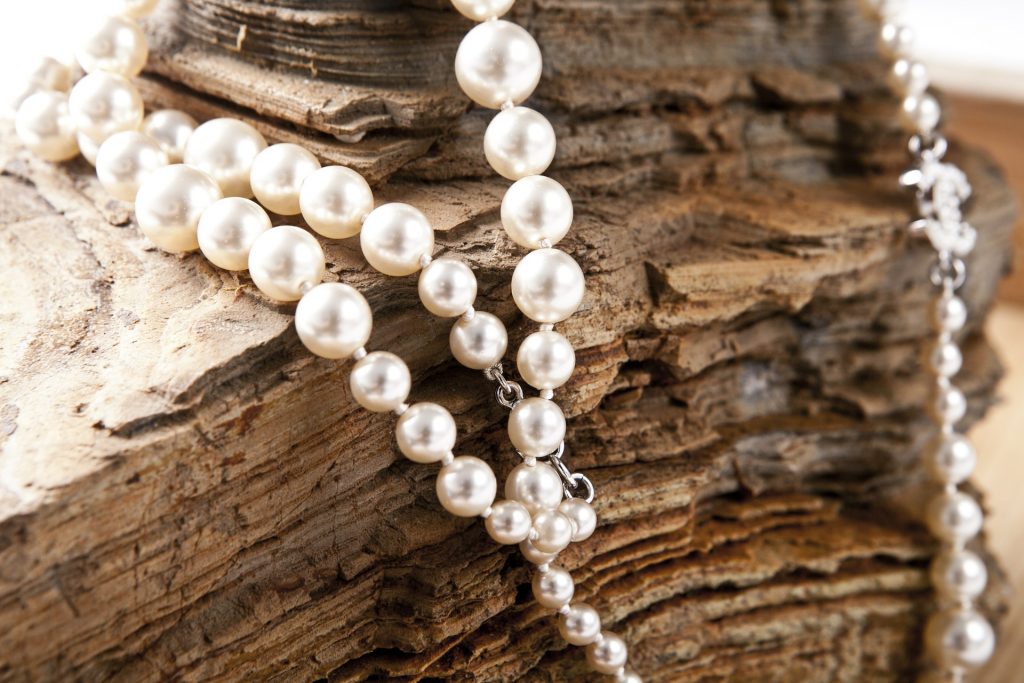
Pearls can technically come from any shelled mollusk. The pearls we know, however, are primarily made by only two groups of clams. One family of these clams live in the sea while the other lives in freshwater, which is where we get the distinction between freshwater and saltwater pearls.
Pearls are created as a result of the natural defence mechanism of the mollusk. Any irritant, such as a parasite, organic matter or even a detached piece of the clam itself, can trigger this response. In order to seal off the irritation, the clam creates a pearl sack around it. Then the protective membrane of the mollusk, or its mantle, will deposit layers of aragonite held together with conchiolin. The combination of these compounds is called nacre, or as it’s most commonly referred to, mother-of-pearl. In natural pearls, this process takes years and often results in non-perfectly spherical gems.
Natural VS Cultured VS Imitation
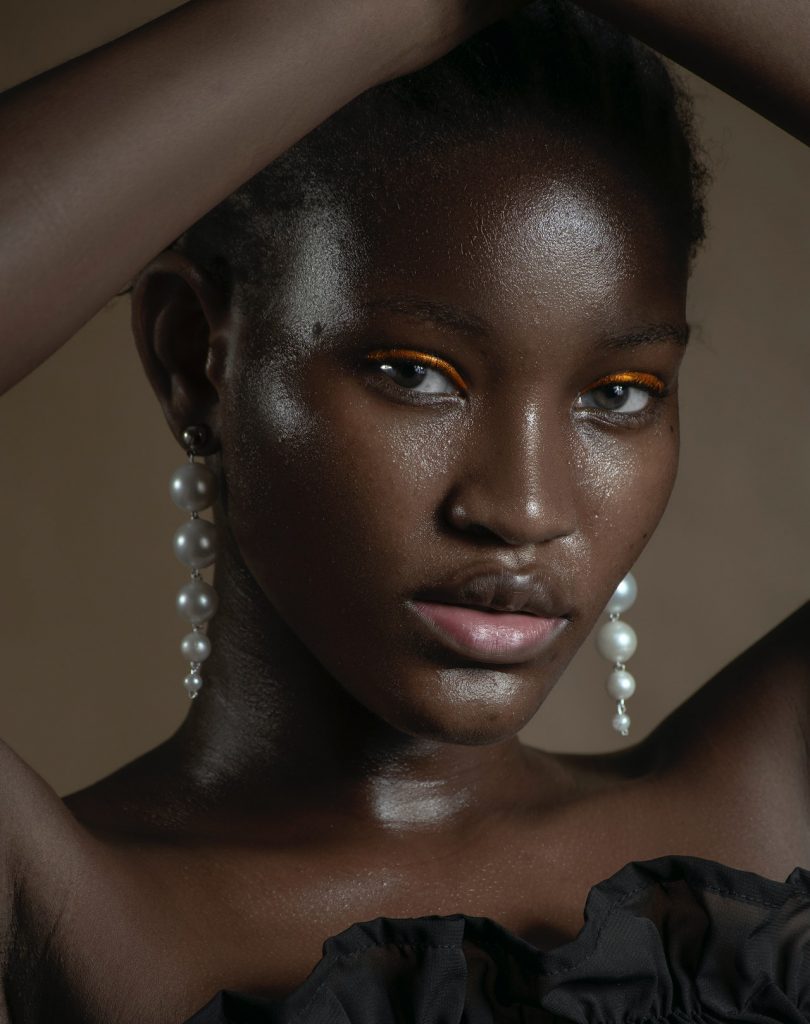
The way to distinguish natural versus cultured pearls comes from the way they are formed. Natural pearls are created naturally with zero human intervention. Cultured pearls on the other hand have the irritant introduced artificially by people. Imitation pearls are often simply glass beads coated in a solution called essence d’Orient which contains fish scales.
The difference between the first two variants and imitation pearls is that the imitation pearls might look the same but their weight and smoothness is different. If you have an imitation pearl in your collection, its lustre will also start dulling over time.
There is one way to tell the difference between cultured and natural pearls. Though they have the same feel and lustre, cultured gems are more often perfectly spherical as they have formed around an object inserted into the clam. The way to distinguish between the two is through an X-ray. With the X-ray we can tell if the core of the gem is inserted or natural.
Due to the length of the process and the amounts of coincidences that need to occur, natural pearls are extremely rare and hard to find. Spherical natural pearls even more so.
Checking Pearl’s Quality and Value
When checking a pearl’s quality there are several factors to look out for. These are the gemstone’s lustre, the shape and blemishing.
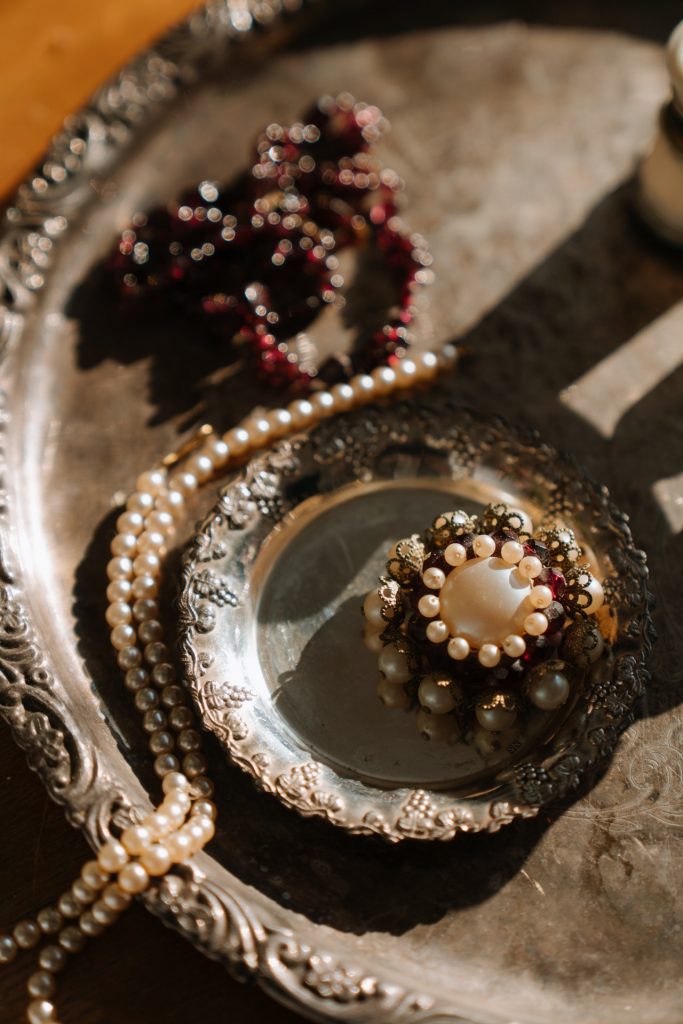
Like we discussed there’s no way to tell if a pearl is cultured or natural with the naked eye. An indication of this could be the price and if the pearl is used as a centrepiece to a more elaborate piece of jewellery. As natural pearls are extremely rare, they would usually be sold individually as a collector’s item, or as a focal point on jewellery.
As a round shape is the most difficult to achieve, spherical or almost perfectly round pearls are of the highest value. Pearls, however, come in all shapes and sizes. Baroque-shaped, oval or pear-shaped pearls are also highly valued by collectors and jewellers alike.
When it comes to lustre, the general rule is: the better the reflection the better the quality. When a gem has what is referred to as ‘excellent’ lustre the reflections on the pearl will be clear, bright and sharp, with little to no blurring. If a pearl’s lustre shows a weak dim hazy reflection, it is considered of fair or poor quality.
Due to pearls beating formed mostly outside of human’s control, it is rare to find a perfect unblemished pearl. Minor irregularities or scuffs are normal and natural. Keeping this in mind, the amount of blemishing on the pearls’ surface needs to be taken into account when assessing the quality. Numerous abrasions can actually lower the durability of the pearl.
Recommendations for Pearl Jewellery
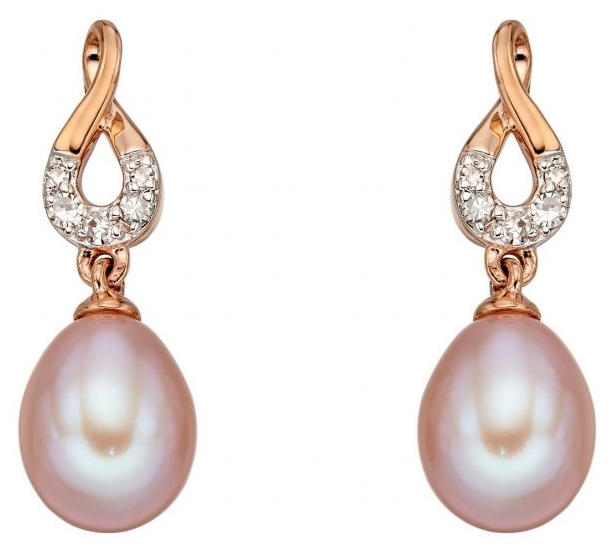
Elements Gold 9ct Rose Gold Pink Freshwater Pearl Pave Diamond Set Earrings GE2230P
These beautiful earrings hold a refined charm. The earrings feature a 9 karat rose-gold loop at the top. Diamond’s have been pave-set into the bottom half of the loop. Adding to the soft glow of the rose gold are a pair of pink freshwater pearls. Altogether the design gives off a delicate and feminine appearance.
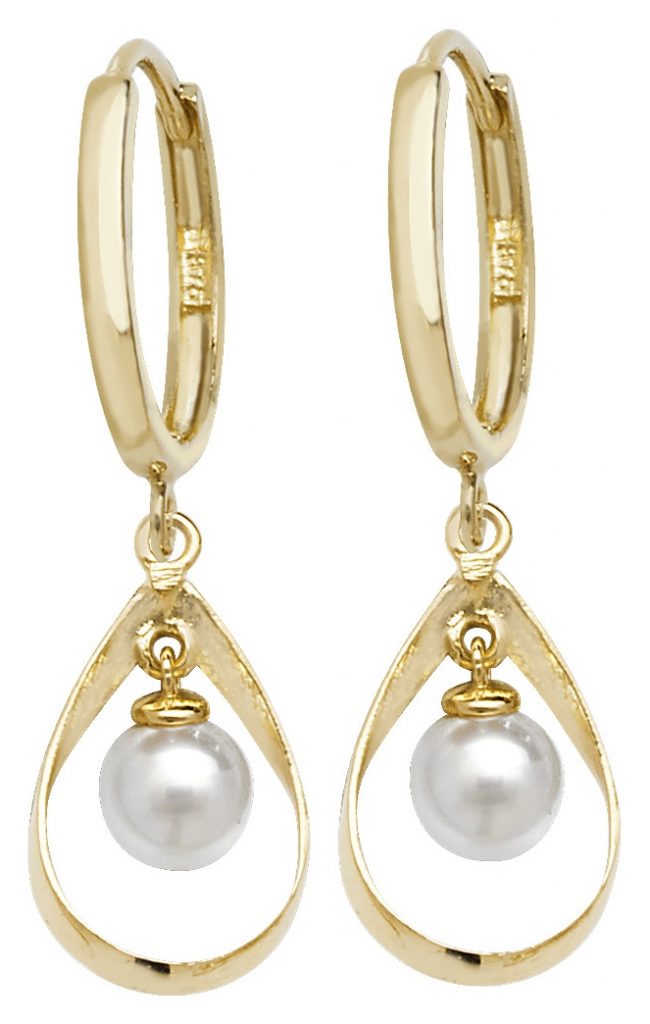
James Moore TH 9k Yellow Gold Drop Pearl Earrings ER1135
The second set of earrings we’d like to recommend have a more versatile design. Their understated beauty lies in the simple modern design. Whether you want to wear this to formal occasions or to glam-up a casual outfit this set is at home anywhere. From each one of the 9 karat yellow gold huggie hoops is suspended a ribbon-shaped loop. On the inside of each, a small white pearl hangs.
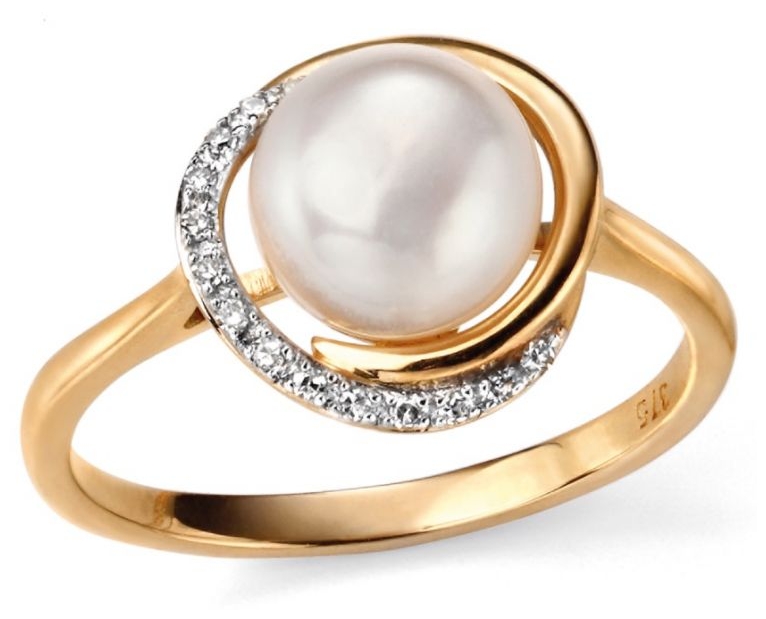
Elements Gold 9k Yellow Gold Diamond Pearl Ring GR503W
A perfects addition to any collection, this 9 karat gold ring is ready to make a statement. The band is kept simple in order to spotlight the star of the design, the pearl set in the centre. Its soft off-white cream colour and beautiful lustre are accented by diamonds set on the left-hand side of the ring.
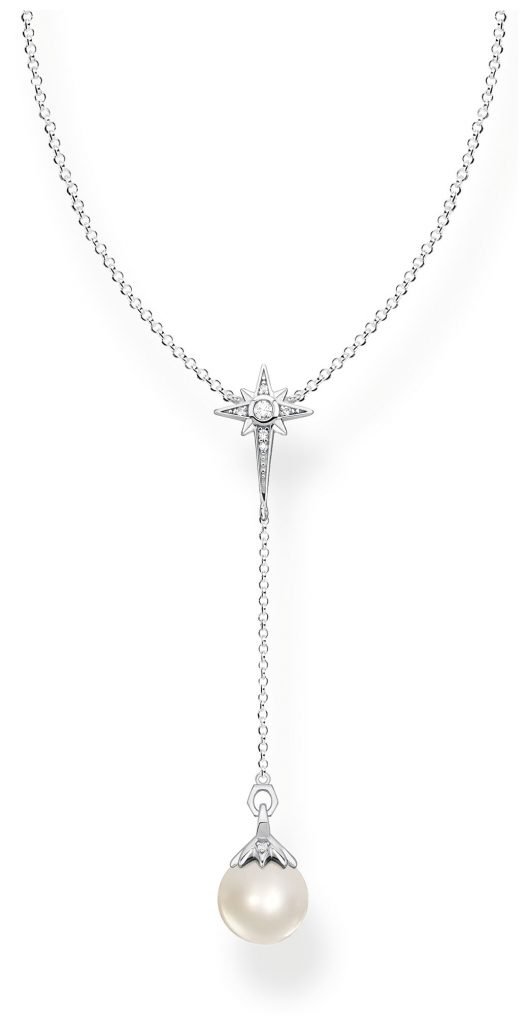
Thomas Sabo Sterling Silver Star And Freshwater Pearl Necklace | 40-45cm KE1986-167-14-L45V
If you’re after a more simple modern piece with an everyday appeal, we suggest this Thomas Sabo necklace. The base of the necklace is a simple sterling silver chain. At the centre is featured a crystal set eight-point star. In addition, from the bottom ray of the star hangs a second chain, at the end of which is a freshwater pearl.
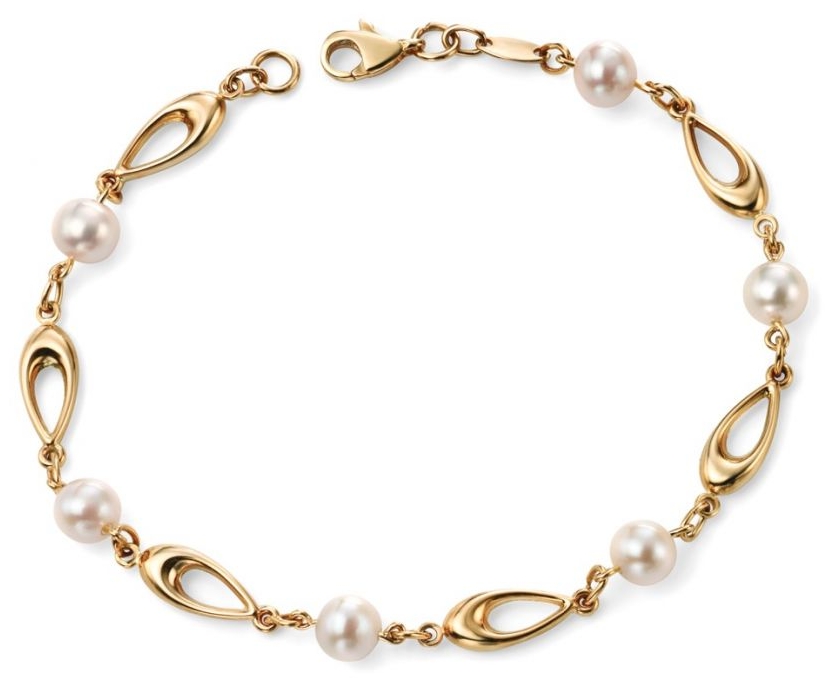
Elements Gold 9k Yellow Gold Freshwater Pearl Link Bracelet GB416W
If on the other hand, you’re after a piece of jewellery thats highlights the luxury and elegance of your style, we suggest this bracelet by Elements Gold. The length of the bracelet is made up of tear-shaped yellow gold loops followed by freshwater pearls. The pearls add that desired touch of luxury, while still staying fashionable and classy.

